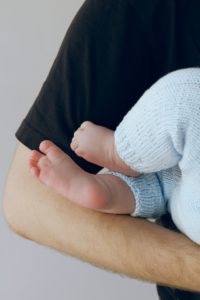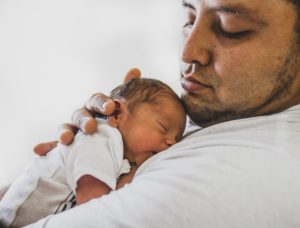In conjunction with Spina Bifida and Hydrocephalus Awareness Month, Spina Bifida Association of Malaysia (SIBIAM) presents a series of articles modified from our website (http://www.sibiam.my) and the Beyond the Cord quarterly newsletter – an initiative by the District Action Group on Spina Bifida and Hydrocephalus (DASH), Rotary District 3300. This article originally appeared in Beyond the Cord (April to June 2021).
 Every journey begins with a sense of anxiety, fear, some amount of hope, and a pinch of excitement.
Every journey begins with a sense of anxiety, fear, some amount of hope, and a pinch of excitement.
There are multiple phases to my journey. It started from the backwaters of Tronoh Mines, Perak, on towards the tough times in medical school. My initial years as a houseman were hectic yet fun, but nothing prepared me for the roller coaster that was my tenure as a medical officer. Posted to the small town of Teluk Intan, I was a Jack of all trades, covering everything; from the operating theatre, the clinics and the emergency department. My upbringing conferred a sense of responsibility and I was totally committed to my patients.
It was during this phase that I met my better half, my rock in this journey. We got married in April 1976 and were blessed with my eldest child, Harmesh Singh. Ask any father and he will tell you the anticipation of the first born is special. However, till today I am unable to describe how I felt when the labour room Sister handed Harmesh to me. I didn’t know what to do. On one hand, my wife had just gone through labour and needed my support. On the other, here was Harmesh who needed me to rally every bit of my medical knowledge.
I asked my mother-in-law to stay with my wife because I had to take Harmesh to Hospital Kuala Lumpur (HKL). Harmesh was barely 3 hours of life when we made our way in my trusty Datsun, along the trunk road from Teluk Intan to HKL, to see (consultant neurosurgeon) Dr Anavangot Mohandas. Harmesh was assessed and scheduled for meningocoele closure the next day.
Although I was advised to keep an eye out for symptoms of hydrocephalus, I was in denial and chose to believe the worst was over. It was easy as I was all alone and had no additional support. As previously cautioned, Harmesh developed hydrocephalus and was fitted with a ventriculoperitoneal (VP) shunt at 3 months of life.
For the next 2 years, I wandered aimlessly without much guidance about spina bifida as a disease or the complications that could arise. I was hoping for some, if any, assistance from my colleagues in the medical fraternity; but it was in vain. Amidst all this uncertainty, there rose a glimmer of hope in the shape of the Colombo Plan Scholarship. I grabbed the opportunity to specialise in paediatric medicine in Wales.
The journey in Wales was a wakeup call. There I was – a medical officer and father of a spina bifida child. However, when confronted about my son’s condition by the Professor of Paediatrics Dr Oliver Peter Grey, I was like a deer in the headlights.
“Have you examined your son’s hips? Have you cultured his urine?” The questions kept coming, but I could only answer “No.” It was time to face that Harmesh had spina bifida – a condition I must embrace both as a doctor and father.
 Harmesh underwent multiple investigations, procedures and interventions in Wales. His hips were stabilised with arthrodesis, his kidney function and urine cultures normalised. My training also continued at a good pace under the very same professor who knocked some sense into me. Although we only spent 2 years in Wales, it proved to be a crucial period for Harmesh.
Harmesh underwent multiple investigations, procedures and interventions in Wales. His hips were stabilised with arthrodesis, his kidney function and urine cultures normalised. My training also continued at a good pace under the very same professor who knocked some sense into me. Although we only spent 2 years in Wales, it proved to be a crucial period for Harmesh.
I was posted to Melaka General Hospital upon my return. Harmesh was 6 years old by then. His mobility was improving, albeit with disabilities. He developed multiple pressure sores over the inner aspect of his foot as well as gluteal region. Once again, I looked for some direction from senior contemporary paediatricians. To my dismay, I received the same unhelpful response from them over and over: “Try not to put pressure over the wounds”.
It was back to the drawing board. I had to come up with methods either not in existence or not tried before for Harmesh’s wounds. Sometimes we were successful, and the joy in Harmesh’s face gave me a sense of jubilation. There was, however some trepidation as Professor Grey’s parting words stuck with me: “Spina bifida is a condition where after solving one problem, and you are just about to stretch your aching back, another problem crops up.” His words certainly rang true.
Education is a basic right for every child, including spina bifida children. Their intelligence is similar, if not better, than the average child. Harmesh was enrolled into the government system for both primary and secondary school. The main challenge we faced was lack of accessibility. We had to request for classes be located on the ground floor. We also applied for extra time during examinations for toilet breaks.
I must mention that authorities were more than accommodating to Harmesh’s needs at every school he attended. However, I do think the Ministry of Education must be better educated regarding the different needs for different disabilities.
From the very beginning, I wanted Harmesh to have as normal a life as possible. So just as I had my trusty Datsun, I wanted Harmesh to have his own set of wheels. Spina bifida individuals can certainly drive and, after some research, we discovered mechanics who were able to make the necessary modifications. The only prerequisite is that automatic transmission is a must.
It has been 40 plus years of what has been a very colourful journey. I was tested both as a father and a doctor. My medical knowledge and skills were challenged. My emotions as a father have gone through fire. All through the initial stages of denial, to accepting the condition and complications that come with it.
I vowed to ensure that Harmesh will be an independent and healthy adult. We fought hard battles to be where we are today. I am proud that Harmesh is a qualified lawyer who lives on his own in Kuala Lumpur. He is very intelligent and updates himself on the latest in spina bifida treatment, egging me on to keep ahead of him! Harmesh’s determination and resilience is my inspiration.
By Dr Harcharan Singh. Edited by Dr Chua Li Shun.
World Spina Bifida and Hydrocephalus Day is celebrated annually on 25 October. This year’s theme is “Elevate Your Voice”. SIBIAM is celebrating the day with a colouring competition for spina bifida children, themed “My Voice Matters”, and writing competition for spina bifida teens and adults with the theme “Inclusion is the Solution”. For more information, email info@sibiam.my.
